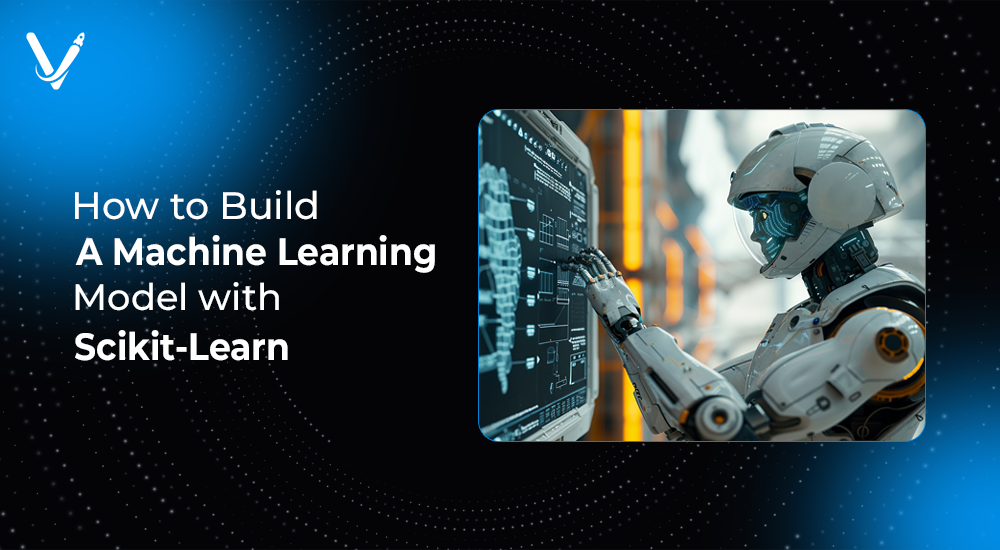How to Build a Machine Learning Model with Scikit-Learn


- May 31, 2025
The explosion of data in recent years has ushered in a golden era for machine learning. Today, businesses across industries are harnessing the power of data-driven decisions to gain a competitive edge. One of the most accessible and widely-used tools in this landscape is Scikit-Learn, a powerful Python library that simplifies the process of building and evaluating machine learning models. If you've been searching for a guide to help you master Scikit-Learn and create your own ML pipeline, you're in the right place.
This blog walks you through how to build a machine learning model with Scikit-Learn using a practical, step-by-step approach. Whether you're working on a personal project, preparing for a technical interview, or gearing up to deploy models in a production environment with a cloud GPU, this post has you covered.
Scikit-Learn is an open-source Python library designed for machine learning. Built on top of NumPy, SciPy, and matplotlib, it provides a robust set of tools for tasks such as classification, regression, clustering, dimensionality reduction, and model selection.
Here’s why developers and data scientists love it:
Before diving into model building, you need to prepare your environment. Install the necessary packages by running:
pip install scikit-learn pandas matplotlib seaborn
Optional but recommended:
pip install jupyterlab
If you're planning to use large datasets or train intensive models, using a cloud GPU environment such as Google Colab, AWS SageMaker, or Azure ML can significantly speed up your work.
A machine learning pipeline is a structured workflow for transforming raw data into actionable insights. In Scikit-Learn, this process can be streamlined with built-in tools that handle everything from preprocessing to model evaluation.
The stages include:
We’ll demonstrate each step using the popular Iris dataset, a multivariate dataset introduced by Ronald Fisher that contains measurements of iris flowers from three species.
from sklearn.datasets import load_iris
import pandas as pd
iris = load_iris()
data = pd.DataFrame(data=iris.data, columns=iris.feature_names)
data['target'] = iris.target
import seaborn as sns
import matplotlib.pyplot as plt
sns.pairplot(data, hue='target')
plt.show()
from sklearn.model_selection import train_test_split
from sklearn.preprocessing import StandardScaler
X = data.drop('target', axis=1)
y = data['target']
scaler = StandardScaler()
X_scaled = scaler.fit_transform(X)
X_train, X_test, y_train, y_test = train_test_split(X_scaled, y, test_size=0.2, random_state=42)
Scikit Learn models come with a unified API. Let's use a Support Vector Machine (SVM):
from sklearn.svm import SVC
model = SVC(kernel='linear')
model.fit(X_train, y_train)
from sklearn.metrics import classification_report, confusion_matrix
y_pred = model.predict(X_test)
print(confusion_matrix(y_test, y_pred))
print(classification_report(y_test, y_pred))
Use Grid Search for fine-tuning:
from sklearn.model_selection import GridSearchCV
param_grid = {'C': [0.1, 1, 10], 'kernel': ['linear', 'rbf']}
grid = GridSearchCV(SVC(), param_grid, refit=True, verbose=2)
grid.fit(X_train, y_train)
print(grid.best_params_)
Let’s consider a telco company aiming to reduce customer churn. They use customer activity data (e.g., usage, support calls, billing history) and apply a classification model using Scikit-Learn to predict if a customer is likely to leave.
The pipeline includes:
This case study illustrates how easily you can build Scikit Learn models for business use cases.
Building a machine learning model with Scikit-Learn doesn’t require you to be a data science wizard. With a clear understanding of the ML pipeline, the right dataset, and some practice, you can start building impactful models today. Scikit-Learn provides a flexible, user-friendly platform to learn, prototype, and deploy models efficiently.
Ready to take your skills to the next level? At Vasundhara Infotech, we help businesses integrate machine learning models into real-world applications. Whether you're building predictive tools, recommendation engines, or AI-driven analytics, our experts can guide your journey.
Copyright © 2025 Vasundhara Infotech. All Rights Reserved.
